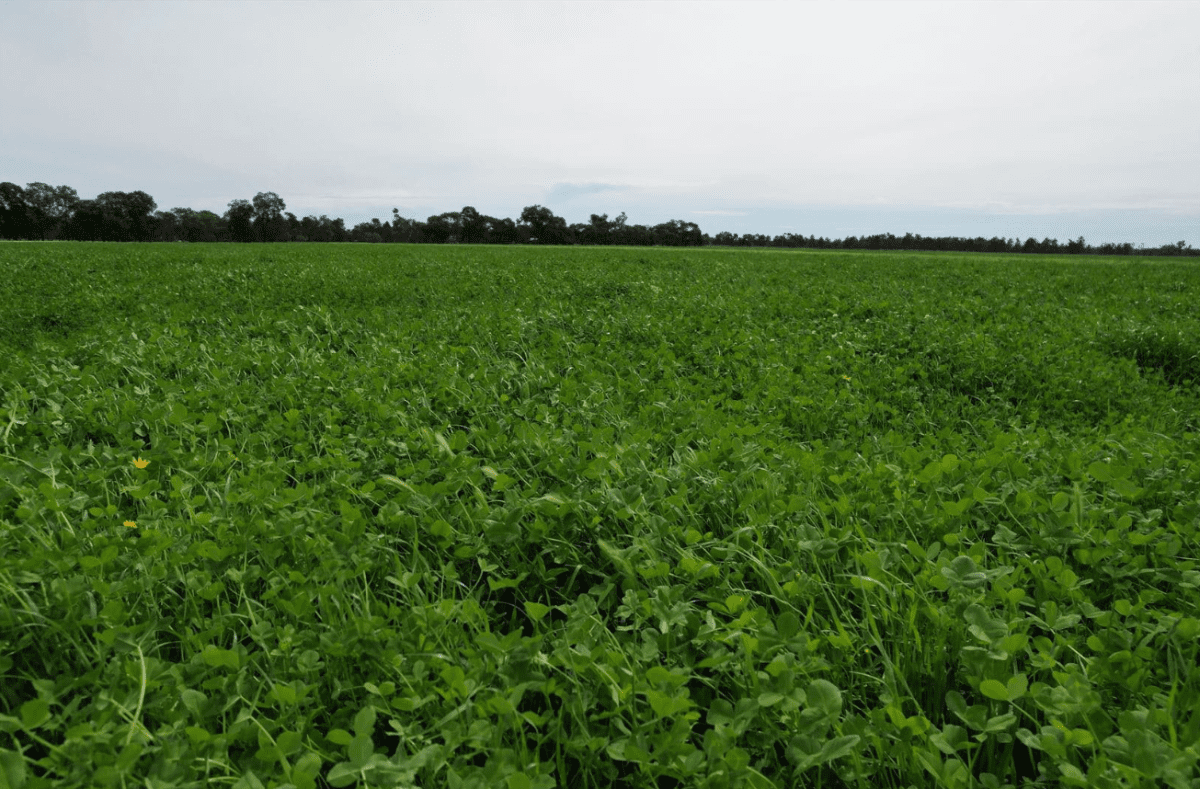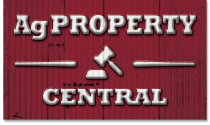
Marong was managed as a mixed operation with a focus on livestock breeding and fattening. Photo: Nutrien Harcourts
A RIVERINA cotton grower has purchased the 2370ha Marong, and plans to convert the entire enterprise from mixed farming to cotton.
Deniliquin-based Ed Harris, a member of the renowned north-west New South Wales cropping family, is said to be the buyer, with close to $15M paid for the holding.
It is understood Mr Harris purchased Marong as a greenfield site, with infrastructure stripped from the property.
Nutrien Harcourts agent James Sides handled the marketing and sale, but was unable to disclose the price or the name of the buyer.
Major production pivot
Mr Harris’ reported plans for Marong will be a substantial shift from the property’s current operations.
Located at Conargo, 38km north-east of Deniliquin, Marong listed in September last year as a mixed holding, with a focus on livestock breeding and fattening.
Vendors Dan and Sally Muenster owned the property for seven years, but reside at Congarrara Station, 100km north of Bourke in north-west NSW, where they run a goat-trading business.
Goats were an integral part of the Marong program, with up to 100,000 animals trucked in, spelled and sent away for processing annually.
About 4000-6000 Dorper lambs were also brought to Marong for finishing.
The property also ran 3000 ewes, 50 head of cattle and 300 nannies.
The former owners had developed about 2000ha to open cropping country.
However, this was primarily used for rotational fodder crops with cash crops grown subject to livestock numbers.
Cotton adds value
Herron Todd White Wagga Wagga-based rural property valuer Andrew Garnsey said the business case for converting irrigated pasture country into cotton adds up in the Riverina.
“I have seen people are knocking out old dairies and anything that was pasture irrigated before.
“It does lift the value of the farms turning it to good laser-levelled row-crop cotton country.
“There is a cost involved obviously.
“It may not equal out in the first year but over two or three years you tend to get the value of it back and justify the expense.
“They get a better return out of cotton because it beats everything else.”
Mr Garnsey estimated it could cost $2500-$3000/ha to convert a property to irrigated cotton.
He said the move could push income from about $1200/ha to $2000-$3000/ha, depending on the country and former uses.
High water availability
Mr Garnsey said southern NSW also offered growers the opportunity to access water at lower rates than northern valleys.
“Low-cost temporary water is also key.
“In the southern region, you get more of that more often.
“The water is cheaper and more reliable than the water in central northern valleys.”
He said this factor can act to reduce the initial operation costs as well as increase crop yields.
“You can come in and don’t have to make the water investment up front if have good seasonal allocations in front of you.”
Reduced operational costs
Infrastructure and industry changes in the past 20 years have also made producing cotton in southern NSW more economical.
“We have seen a lot of conversions over the last 10 years, particularly since they started building cotton gins in the south because it cut the cost to grow it.
“They used to haul everything up to the north in the old days…and now you have three gins around the Griffith area.”
Mr Garnsey said the introduction of Bollgard cotton varieties and baler pickers also brought major changes to farm operations in the region.
He said Bollgard significantly reduced herbicide usage and the cut the cost to grow the crop.
He said modern harvesting machinery lowered staffing numbers, overall cost of fuel and servicing expenses.
“The crops have been able to get harvested cheaper and more efficiently because one machine replaces two older machines and five or six module builders and boll buggies.
“It also reduces staff; where you would have needed 10-12 staff at harvest, now you have one guy driving up and down in the machine.”

The former owners of Marong had used the cropping country primarily for fodder production. Photo: Nutrien Harcourts
Irrigation offers opportunity
Marong’s significant water access and extensive Forest Creek frontage did offer any prospective buyer the opportunity to convert from fodder production to irrigated cash crops such as cotton.
The property featured about 1000ha of irrigation, the majority of which has been lasered.
It can draw water from the Murrumbidgee and Murray River systems, and water can be harvested from a drainage channel accessed from two licensed extraction points.
Riverina irrigation land popular
Riverina irrigated cotton and cropping country continues to a be desirable investment for both corporates and larges-cale family operators.
In January, the 14,916ha cotton holding, Gundaline, sold for an impressive $121.25M to Chinese textile firm Zhejiang Sunrise Garment Group.
The property was only listed in October last year, and with price expectations above $100M.
A farming family purchased the 2456ha irrigated cotton and cropping property, HK Farming, for a reported $15M late last year.
Located at Gunbar, 35km north of Carrathool, HK Farming offered the new owners the opportunity to expand the cotton or horticulture production.
Darlington Point irrigated cropping property Wondaree Farms settled in October last year.
An unnamed NSW farmer purchased one section of the holding and leased the remaining portions from the vendor.
Grain Central: Get our free news straight to your inbox – Click here



HAVE YOUR SAY